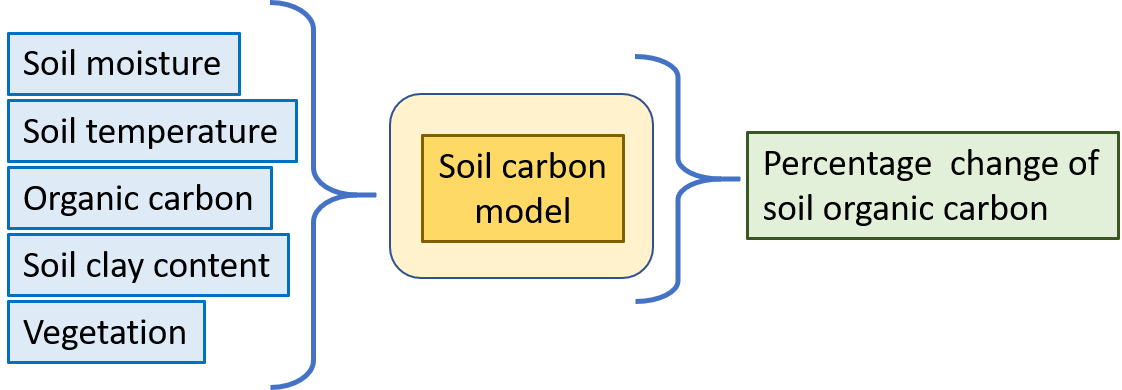Soil carbon model description
Management interventions, particularly Nature-Based Solutions (NBSs), have gained increasing attention for their potential to enhance Soil Organic Carbon (SOC) sequestration. In regions where soil samples are limited, SOC contents are estimated using three approaches: fixed assumed values based on soil properties, changing values based on land use change, and modelled values based on parameters like temperature, water holding capacity, and aeration.
In EIFFEL Pilot 1 climate app, the third, modelling-based approach was used. Among various carbon models, the Daisy Model is a dynamic simulation model that explores interactions between plants, soil, and the atmosphere. It aids in understanding carbon sequestration potential and the effects of climate change on ecosystem carbon cycling.

Soil carbon model inputs and output
In this analysis, the empirical equations-based sub-model (named as CARBI) from the Daisy model was employed. The model focuses on one soil organic carbon pool and assumes that the system is in equilibrium (SOC input = SOC output). The depth of the carbon stock block was kept as 30 cm. Five input datasets are used in the model: soil moisture, soil temperature, organic carbon, soil clay content and vegetation (obtained from land use). Average soil moisture in the top 30 cm soil layer was obtained from the MIKE SHE simulation results. The value of organic carbon input is dependent on crop and grass residues including roots, animal manure and compost and it is calculated as an average per vegetatation type (land use type) using the soil clay content (%) and organic carbon measurements (kg/ha) from the soil surveys (n=3768) in Belgium and the Netherlands datng from the 1980s. The gridded data of percentage soil clay content were obtained from LUCAS 2015 topsoil physical properties dataset. Soil temperature was assumed to be constant at 10 degrees Celsius. Additionally, the estimates of the mineralization rate were set at 2%, based on the Daisy model, under the conditions that clay content is 0%, soil temperature is 10˚C, and pressure potential is 100kPa. Mineralization rates for different soil profiles, with varying clay content, temperature, and pressure potential, were calculated by deriving factors for each of these parameters. The modelling procedure is iterative, where the MIKE SHE hydrological model calculates soil moisture content, which is an input to the CARBI model that performs the SOC calculations. SOC is then used to update the soil hydraulic properties (inputs to the hydrological model) and obtain updated soil moisture from the hydrological simulation to be used in the next iteration. Converging results are usually obtained after few iterations with this sequential coupling. The final model output is a map with Soil Organic Carbon content (SOC - %). With adaptation strategies based on NBSs, which involve changes of land use and vegetation, this result will be modified and the difference to the current conditions can be obtained as the Soil Organic Carbon Difference (SOCD - %), which s the KPI used for assessment of the adaptation strategies.
Some example inputs and model results can be seen below.



